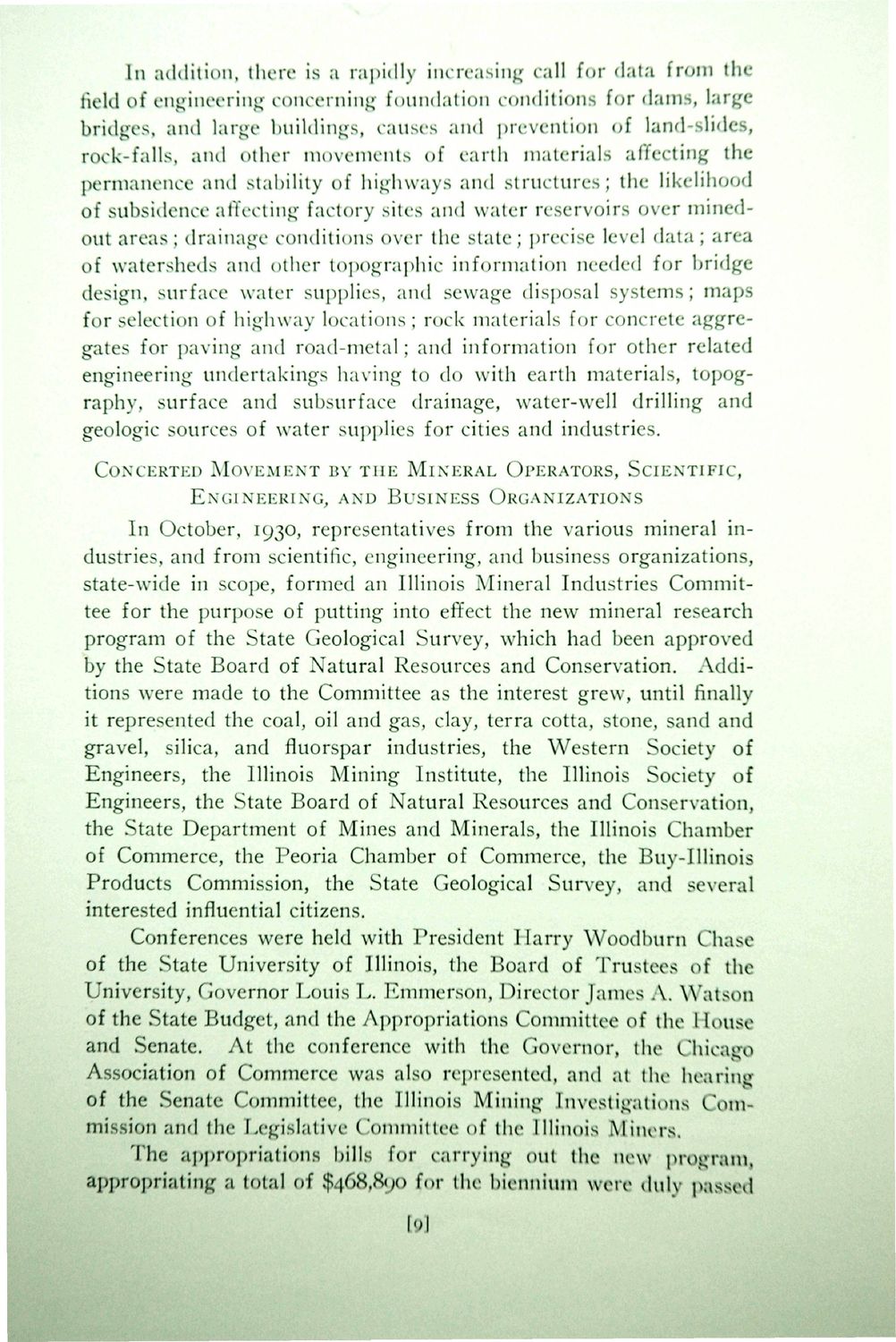| |
| |
Caption: Dedication - ISGS New Mineral Lab
This is a reduced-resolution page image for fast online browsing.

EXTRACTED TEXT FROM PAGE:
In addition, there is a rapidly increasing call for data from the field of engineering concerning foundation conditions for dams, large bridges, and large buildings, causes and prevention of land-slides, rock-falls, and other movements of earth materials affecting the permanence and stability of highways and structures; the likelihood of subsidence affecting factory sites and water reservoirs over minedout areas; drainage conditions over the state; precise level data; area of watersheds and other topographic information needed for bridge design, surface water supplies, and sewage disposal systems; maps for selection of highway locations; rock materials for concrete aggregates for paving and road-metal; and information for other related engineering undertakings having to do with earth materials, topography, surface and subsurface drainage, water-well drilling and geologic sources of water supplies for cities and industries. CONCERTED MOVEMENT BY THE MINERAL OPERATORS, SCIENTIFIC, ENGINEERING, AND BUSINESS ORGANIZATIONS In October, 1930, representatives from the various mineral industries, and from scientific, engineering, and business organizations, state-wide in scope, formed an Illinois Mineral Industries Committee for the purpose of putting into effect the new mineral research program of the State Geological Survey, which had been approved by the State Board of Natural Resources and Conservation. Additions were made to the Committee as the interest grew, until finally it represented the coal, oil and gas, clay, terra cotta, stone, sand and gravel, silica, and fluorspar industries, the Western Society of Engineers, the Illinois Mining Institute, the Illinois Society of Engineers, the State Board of Natural Resources and Conservation, the State Department of Mines and Minerals, the Illinois Chamber of Commerce, the Peoria Chamber of Commerce, the Buy-Illinois Products Commission, the State Geological Survey, and several interested influential citizens. Conferences were held with President Harry Woodburn Chase of the State University of Illinois, the Board of Trustees of the University, Governor Louis L. Emmerson, Director James A, Watson of the State Budget, and the Appropriations Committee of the House and Senate. At the conference with the Governor, the Chicago Association of Commerce was also represented, and at the hearing of the Senate Committee, the Illinois Mining Investigations Commission and the Legislative Committee of the Illinois Miners, The appropriations bills for carrying out the new program, appropriating a total of $468,890 for the biennium were duly passed [9]
| |